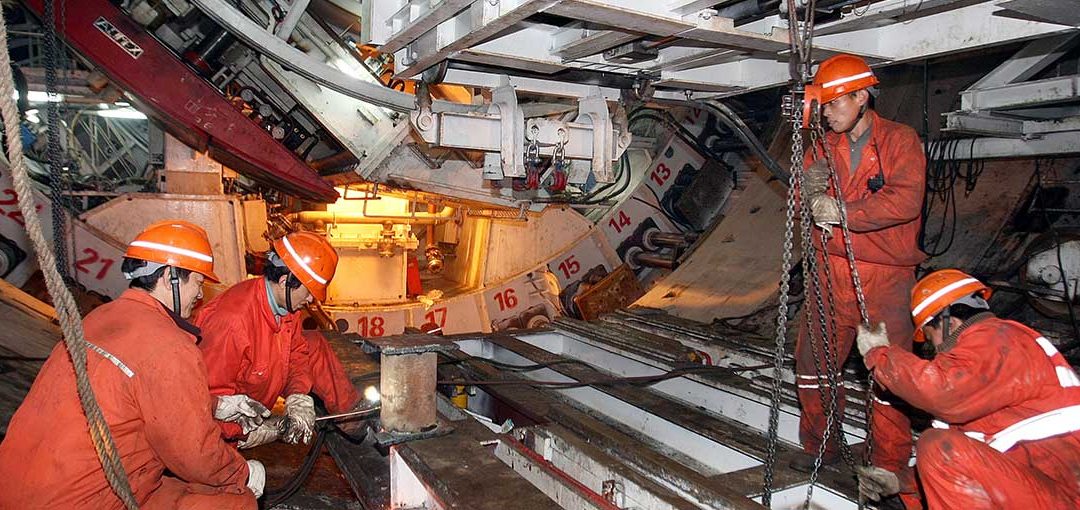The Importance Of Good Communication In Confined Spaces
The Importance Of Good Communication In Confined Spaces
August 28, 2023 |
In environments characterized by limited or restricted spaces, effective communication plays a vital role. Individuals working in confined areas such as tanks, pipes, and vessels encounter increased risks due to unfavorable conditions and restricted mobility. Enhancing communication in confined spaces holds paramount importance for ensuring the safety of personnel and optimizing operational efficiency.
Establishing a Foundation for Safety
In-depth examination of the hazards associated with enclosed spaces underscores the critical importance of implementing a comprehensive approach to risk management. Effective communication emerges as a central pillar of this strategy, serving the primary objective of establishing a safe and secure environment within these confined areas.
The Art of Active Listening
Active listening is an essential skill to possess in limited environments. It involves dedicating full attention to others, comprehending their message, and providing thoughtful responses. This technique enhances team communication by effectively addressing the concerns and questions of all individuals involved.
Practicing active listening helps to build trust and rapport among team members. By promoting open dialogue, it creates an inclusive work environment. This leads to improved safety and efficiency in enclosed spaces.
Building Strong Teamwork
Teamwork and collaboration are critical for ensuring smooth operations in confined spaces. By combining these tasks, you can achieve better results, lower risks, and overall improved performance. The bedrock of this synchronized teamwork is fluid communication.
Each team member has a role. Effective confined space communication helps everyone understand their duties. Harmonious communication is important for a well-coordinated group effort. It applies to everyone involved, including the entrant, the attendant, and the rescue personnel. It aligns and streamlines shared objectives. This ensures that everyone follows the same safety principles.
Overcoming Obstacles in Project Execution
Confined spaces can pose unexpected difficulties. These may include unforeseen dangers, equipment issues, or sudden emergencies. In such situations, agile communication becomes a guiding light.
Quick and accurate updates on developing situations enable swift action. They give everyone the information about what is happening, what has changed, and the steps they should take in response. Real-time communication in small spaces helps navigate project challenges effectively.
Nurturing a Learning Culture through Communication
Effective communication in confined space work environments relies on team members sharing knowledge and experiences. Workers can develop a shared understanding of best practices by attending safety training sessions or sharing anecdotes about updated protocols.
To help personnel working in confined spaces grow professionally, it is important to foster a culture of open learning and encourage continuous improvement through communication. Good communication strengthens a team’s skills and reinforces safety measures.
Cementing Safety Through Crushing Silence
Silence in hazardous environments can be deadly, not precious or valuable. In these limited spaces, danger can quietly appear. If workers don’t communicate well, this silence can lead to avoidable accidents.
The blending of workers from diverse backgrounds, experiences, and training levels often leads to different understandings of silence. To some, a calm environment may symbolize smooth operations. To others, this very silence can be a forewarning of an approaching hazard. Building a clear communication bridge is crucial to prevent confusion and ensure everyone understands and follows safety protocols.
Embracing Technology for Enhanced Communication
Technological advancements play a significant role in enhancing communication in confined spaces. Devices like two-way radios and hands-free communication systems allow workers inside and outside the space to communicate continuously. During emergencies, these tools are very useful. They help respond faster and make things safer.
Teams stay updated on the latest advancements and maintain effective communication practices according to modern industry standards. Not embracing new technologies is risky for both worker safety and operational efficiency. The latest communication technology is crucial for success in limited spaces.
- Wearable Technologies: Wearable technologies are increasingly becoming popular for confined space communication. Smart helmets with augmented reality displays, head-mounted cameras, and task-specific exoskeletons are devices that can give real-time data, help with remote collaboration, and improve the physical abilities of workers. Converging technologies improve communication and enhance safety, efficiency, and productivity in tight spaces.
- Utilizing Drones and Robotics: Drones and robotics have begun to find their niche in confined spaces. These assets can go where people can’t, collect important data, and do things without endangering human lives. Drones are equipped with cameras and sensors. They can transmit live video feeds and data to operators. This allows for informed decision-making and improved collaboration.
- Advancements in Radio Communications: Two-way radios have been widely used for communication in confined spaces, and advancements in technology are making them even more capable. Digital radio systems now provide clearer audio, longer range, and more secure transmission. Integration with smartphones, tablets, and computers enables various communication features such as text messaging, voice recording, and real-time location tracking, improving overall communication systems.
- Cloud-Based Collaboration Platforms: Cloud-based platforms have demonstrated their capacity to revolutionize communication workflows. Cloud-based solutions enable secure sharing of data and information among workers, supervisors, and teams. They create a unified communication environment that encourages collaboration, real-time decision making, and safety. You can access this information from anywhere, which helps you stay informed and connected.
